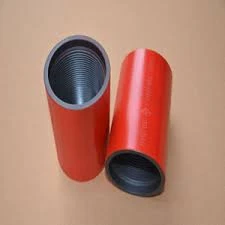- Afrikaans
- Albanian
- Amharic
- Arabic
- Armenian
- Azerbaijani
- Basque
- Belarusian
- Bengali
- Bosnian
- Bulgarian
- Catalan
- Cebuano
- Corsican
- Croatian
- Czech
- Danish
- Dutch
- English
- Esperanto
- Estonian
- Finnish
- French
- Frisian
- Galician
- Georgian
- German
- Greek
- Gujarati
- Haitian Creole
- hausa
- hawaiian
- Hebrew
- Hindi
- Miao
- Hungarian
- Icelandic
- igbo
- Indonesian
- irish
- Italian
- Japanese
- Javanese
- Kannada
- kazakh
- Khmer
- Rwandese
- Korean
- Kurdish
- Kyrgyz
- Lao
- Latin
- Latvian
- Lithuanian
- Luxembourgish
- Macedonian
- Malgashi
- Malay
- Malayalam
- Maltese
- Maori
- Marathi
- Mongolian
- Myanmar
- Nepali
- Norwegian
- Norwegian
- Occitan
- Pashto
- Persian
- Polish
- Portuguese
- Punjabi
- Romanian
- Russian
- Samoan
- Scottish Gaelic
- Serbian
- Sesotho
- Shona
- Sindhi
- Sinhala
- Slovak
- Slovenian
- Somali
- Spanish
- Sundanese
- Swahili
- Swedish
- Tagalog
- Tajik
- Tamil
- Tatar
- Telugu
- Thai
- Turkish
- Turkmen
- Ukrainian
- Urdu
- Uighur
- Uzbek
- Vietnamese
- Welsh
- Bantu
- Yiddish
- Yoruba
- Zulu
stainless steel reducer coupling
The Importance of Stainless Steel Reducer Couplings in Modern Applications
Stainless steel reducer couplings are integral components in various piping systems, serving the critical function of connecting two pipes of different diameters. These fittings are particularly valued for their durability, resistance to corrosion, and ability to withstand high pressures and temperatures. With numerous industrial and architectural applications, understanding the benefits and uses of stainless steel reducer couplings is essential for professionals in engineering, construction, and plumbing industries.
What is a Stainless Steel Reducer Coupling?
A reducer coupling, as its name implies, is a fitting that allows for the transition between two different pipe sizes. Specifically, a stainless steel reducer coupling has one end with a larger diameter and the other end with a smaller diameter, effectively 'reducing' the flow from the larger pipe to the smaller one. This functionality is crucial in systems where space is limited or where existing pipe sizes must be adapted to new specifications.
Advantages of Stainless Steel
Stainless steel is a favored material for couplings due to its various inherent properties. First and foremost, it offers high resistance to corrosion and rust, making it suitable for use in harsh environments—both indoors and outdoors. This quality is particularly important in industries such as chemical processing and wastewater management, where exposure to corrosive substances is common.
Moreover, stainless steel can withstand elevated temperatures and pressures, ensuring safety and reliability in high-stress applications
. Additionally, it is hygienic and easy to clean, which is vital in sectors like food and beverage and pharmaceuticals, where cleanliness is paramount.stainless steel reducer coupling

Applications of Stainless Steel Reducer Couplings
The versatility of stainless steel reducer couplings means they find utility across a wide range of sectors. In the construction industry, they are essential for plumbing systems, linking various pipe sizes ensuring efficient water flow and drainage. In HVAC (Heating, Ventilation, and Air Conditioning) systems, these couplings help manage airflow, connecting ductwork of different dimensions effectively.
Moreover, in the realm of oil and gas, stainless steel reducer couplings are employed in pipelines that transport products under high pressure. Their ability to resist environmental degradation extends the lifespan of facilities and reduces maintenance costs, making them an economically sound choice.
Installation and Maintenance
Installing stainless steel reducer couplings requires careful consideration to ensure a secure fit and optimal performance. It is crucial to check compatibility with the pipes being joined and to follow manufacturer guidelines regarding torque specifications during tightening. Furthermore, while stainless steel is low-maintenance, periodic inspections are advisable to monitor for any signs of wear or stress, especially in high-risk environments.
Conclusion
In summary, stainless steel reducer couplings are indispensable components in modern engineering and construction. Their unique properties of corrosion resistance, strength, and versatility make them ideal for a broad spectrum of applications, from residential plumbing to industrial pipelines. As industries continue to evolve towards more demanding applications, the reliance on stainless steel reducer couplings will undoubtedly grow, driven by the need for durable and efficient solutions. Emphasizing proper installation and maintenance practices will ensure these fittings enhance system performance and longevity, securing their place in the future of piping infrastructure.
-
Tubing Pup Joints: Essential Components for Oil and Gas OperationsNewsJul.10,2025
-
Pup Joints: Essential Components for Reliable Drilling OperationsNewsJul.10,2025
-
Pipe Couplings: Connecting Your World EfficientlyNewsJul.10,2025
-
Mastering Oilfield Operations with Quality Tubing and CasingNewsJul.10,2025
-
High-Quality Casing Couplings for Every NeedNewsJul.10,2025
-
Boost Your Drilling Efficiency with Premium Crossover Tools & Seating NipplesNewsJul.10,2025







